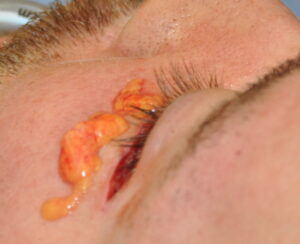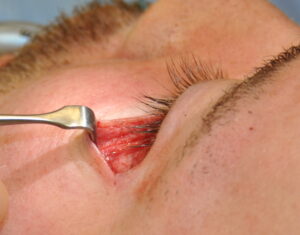Undereye hollowing is a very common aesthetic orbital concern. There are multiple reasons why undereye hollowing exists from lack of adequate fat/soft tissue thickness to an infraorbital rim bony deficiency. And in some patients it is a combination of both. There are even situations where cheek implants have been placed and now the infraorbital area looks too hollow.
The most common treatment for undereye hollows are various injectable filler materials. Most commonly synthetic fillers are used and can be very successful and in some cases may last much longer than in other areas of the face. Fat injections can also be used but they are plagued with issues of potential irregularities and unpredictable graft survival/retention.
An alternative soft tissue strategy for undereye hollows is the placement of a solid fat graft. Often lost and under utilized in today’s era of fat injections the placement of small solid fat grafts has a long history of successful use in the face. One convenient source to do so is the buccal fat pad. Anatomically close to the lower eyelid it offers more than enough fat to fill the undereye area….provided one is doing a buccal lipectomy anyway or has a fuller face naturally and can tolerate the cheek fat loss.


The lower eyelid skin flap is than closed over the fat graft in the typical manner of any lower blepharoplasty procedure.
Fat transposition of the lower eyelid is the most commonly used solid fat graft to tear troughs and undereye hollows. But the placement of a larger solid fat graft from the buccal fat pad is a useful technique when larger volume additions are needed to the lower eyelid.
Dr. Barry Eppley
Indianapolis, Indiana



